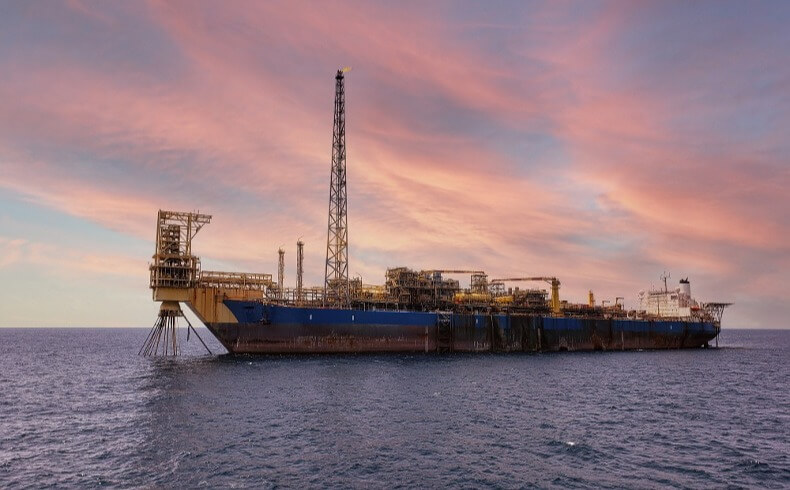
Are Large Diameter Seals Critical for FPSO Safety?
Posted by CDI Products on Sep 15, 2021
In August, Houston hosted the 2021 Offshore Technology Conference (OTC). This year’s conference highlighted the latest innovations in the offshore energy industry and opened some great dialogue around energy transition, sustainability, and safety.
At OTC, some of the largest operators in the world shared insights on a series of joint industry projects focused on safety of the aging global FPSO fleet. (Click here to learn more.)
Used in offshore production since the 1970s, FPSOs continue to revolutionize the energy industry, with new FPSOs being used on major liquid natural gas (LNG) projects to process, store, and export condensate and liquefied petroleum gas (LPG) directly to market.
What’s an FPSO?
An FPSO is a floating storage, production, and offloading system used in deep water and ultra-deep water energy applications. The FPSO receives fluids including crude oil, LNG, water, and other substances from a subsea reservoir through risers.
The fluids are then separated within the FPSO’s topsides production facilities. Following processing, an FPSO holds oil or gas before periodically unloading it to shuttle tankers or transporting it via pipelines.
FPSOs range in size and capacity, with some FPSOs housing 20,000-barrels-per-day oil processing plants, while others are mega-production units with a capacity of over 250,000 barrels per day. One of the world’s largest FPSOs has a storage capacity of 2.2 million barrels.
What Makes an FPSO Unique?
The basic FPSO architecture is a ship-shaped vessel with processing equipment, or topsides, mounted on the vessel’s deck and hydrocarbon storage beneath the vessel’s double hull. FPSOs are suited for deep water applications because of mooring systems.
A central mooring system enables the vessel to rotate freely in response to changing weather conditions, also known in the industry as weathervaning, and spread-mooring systems anchor the vessel at several points along the seafloor.
This mobility makes FPSOs ideal for tough environments and adverse weather conditions like hurricanes, waves activity, and ice flow. When operating under such potentially perilous circumstances, safety standards, equipment, and sealing components cannot be compromised.
Where Are Large Diameter Seals Used?
On an FPSO, fluid swivels are used to move products such as oil, water, and gas between the stationary portion of the turret and the weathervaning vessel. Swivels ensure the safe transmission of all fluids, controls, and power from wells, flowlines, manifolds, and risers to the rotating vessel.
Dynamic seals are integral to protecting the fluids and material flowing through the swivel while protecting the environment from emissions, leakage, or contamination. The large diameter seals used in fluid swivels must withstand some of the most strenuous conditions under extreme temperatures and pressures, and they require long life with minimal maintenance intervals.
Large diameter seals must handle extreme temperatures, high pressures, high speeds, and corrosive liquids and gasses. Most seals are produced with high-performance thermoplastics – like polytetrafluoroethylene (PTFE), polyether ether ketone (PEEK), polyphenylene sulfide (PPS) and others – with the characteristics to handle the environmental conditions, mitigate wear, and promote long life efficiency.
What Does the Future Look Like for FPSOs?
FPSOs continue to be attractive to producers for their flexibility, cost-effectiveness, and environmental friendliness. Although some are custom designed, FPSOs can be in essence recycled by repurposing existing marine vessels like tankers. These recycled vessels mean a production timeline can be measured in months instead of years.
FPSOs may also be designed and reconfigured to operate in a more environmentally responsible manner than their immobile counterparts. Without a permanent ecological footprint, FPSOs mitigate long-term impact to ecological systems and virtually eliminate abandonment issues, costs, and potential risks at end of life.
According to a recent report by the International Maritime Associates (IMA) and World Energy Reports (WER), the FPSO market looks to be actively recovering from any COVID-19-related stacking or shutdowns. Estimates suggest the market would reach $67 billion U.S. by 2027, with forecasts of 110 preliminary projects that require an FPSO for production and 20 FPSO awards for 2021 and 2022.
New FPSO units on order reflect a trend toward LNG FPSOs, which reflects the worldwide sustainability objectives and the energy transition to a low-carbon future. As major operators are working on projects to support safety for the aging FPSO fleet, new advancements and innovations are in development to meet the emerging needs of the global market.
Manufacturing Large Diameter Seals
High-performance polymer sealing solutions are ideal for a variety of large diameter rotary swivel stacks, marine industry applications, turret mooring buoy swivel systems, and fluid transfer couplings that handle chemicals, condensates, fuels, water, emulsions, hydraulic fluids, and gases.
Manufacturers with robust on-site capabilities can custom-design, develop, and manufacture high-quality polymer components, including large diameter seals, O-rings, V-rings, U-type seals, valve seats, excluders, piston rings, bearings, custom parts, and much more for use in pumps, compressors, valves, energy production, ground and marine vessels and aircraft, medical and biomedical applications, semiconductor production equipment, water management, and beyond.
To learn more about using large diameter seals for your next project, start a conversation with our application engineers.
Topic: High-Performance Polymers, offshore energy, large diameter seals
